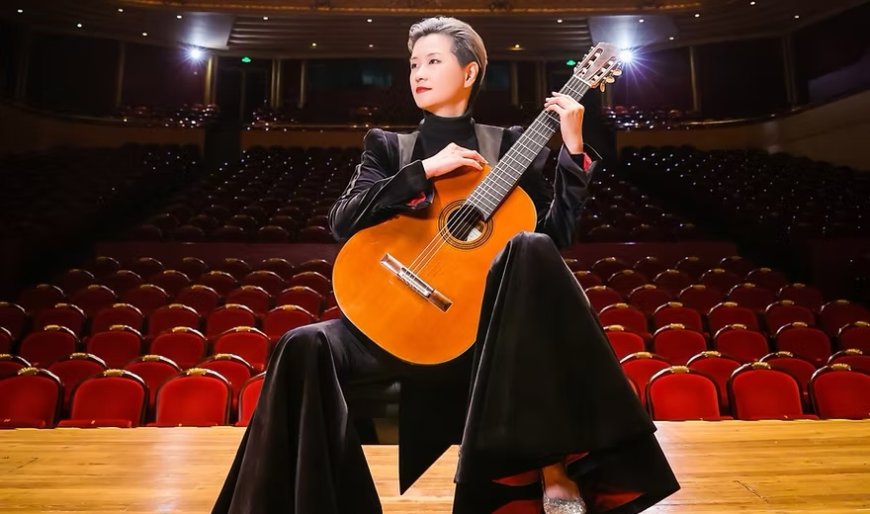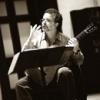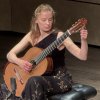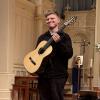
Chinese-born guitarist Meng Su has established an international reputation for exquisitely flexible musicianship, both passionate and intelligent, as well as effortless virtuosity. Su has been a Bay Area favorite since 2011 when she first served as San Francisco Performances’s artist-in-residence as one-half of the Beijing Guitar Duo alongside Yameng Wang.
She offered a solo concert, presented by San Francisco Performances and the Omni Foundation for the Performing Arts, at St. Mark’s Lutheran Church on Saturday, Oct. 18. The evening featured major works by J. S. Bach and Agustín Barrios Mangoré, Romantic evocations of time and place by Francisco Tárrega, an exciting world premiere of a piece by the increasingly acclaimed Vietnamese American composer Viet Cuong, and a masterpiece by Sérgio Assad.
Bach’s Cello Suite No. 3 is a joyous and extroverted composition, and Meng Su’s performance of it on guitar immediately created a buoyant atmosphere with her gorgeous and nuanced tone and exquisite control of Bach’s incredible rhythmic inventions. The Prelude felt like an exuberant improvisation, and the rich chords at the movement’s climax were both a vivid expression of the emotional power Bach created with the preceding music and an opportunity for Su to demonstrate the incredible tonal power she draws from her Matthias Dammann guitar.

The subsequent movements were notable for the brilliant way she transformed Bach’s dances into profound spiritual statements: the Allemande was stately and measured; the Courante brilliant and articulate; the harmonically rich Sarabande a model of serene introspection; and an unusual but beautifully subdued interpretation of Bourrée I and II made the exuberant Gigue an exhilarating finale.
The Paraguayan guitar virtuoso Mangoré — also known as Agustín Pío Barrios — was a romantic composer who wrote music overflowing with emotion and deeply influenced by the music of Bach. His La Catedral is a three-movement work about a pilgrimage he made to the Montevideo Cathedral in Uruguay. During the Preludio, Su used a lovely sense of color and a mastery of the stratospheric upper register of her guitar to capture Barrios’s deep emotion in prayer; in the Andante Religioso, she amazingly evoked a cathedral organist playing Bach; and in the Allegro Solemne, she used her astonishing virtuosity to portray Barrios leaving the Cathedral and entering a lively city scene.
Su’s depth of musicianship made this the finest performance I have heard of one of the most memorable guitar compositions of the 20th century.
Francisco Tárrega, a contemporary of Granados and Albéniz, was the first modern guitarist to gain recognition as an artist of the highest caliber. His Variazioni sul Carnevale di Venezia is based on a set of variations by violinist and composer Niccolò Paganini, who in turn based his composition on a popular Italian tune associated with the glamorous and licentious Carnival held in Venice at Mardi Gras.
An outlandishly difficult composition featuring every special effect known to 19th-century guitarists, many who play it are guilty of using it as an empty display of ego and virtuosity. However, Su’s seemingly effortless performance showcased the music’s lighthearted good humor and turned it into a witty and delightful collaboration between artist and audience. Her later performance of Tárrega’s Capriccio árabe and Recuerdos de la Alhambra was an affecting and lyrical evocation of Moorish Spain.
The World Premiere of Viet Cuong’s Where the Echo Sings was much anticipated. His first guitar piece, Obsession, won first prize in the 2014 Boston GuitarFest Composition Competition, and Where the Echo Sings was written for four internationally acclaimed artists including Su, and it won the prestigious Barlow Prize for composition. It is an exciting nine-minute piece influenced by Bach’s use of implied counterpoint in his music for solo violin, the sequencer and iterator effects used in electronic music, and the strummed chords of flamenco. The markings in the score — reverberant, zealous, distant, faster, and ecstatic — give a good summary of the overall effect and Su’s stunning performance offered a World Premiere that I am sure thrilled the composer.

The final piece on the program was Sérgio Assad’s brilliant three-movement Aquarelle. Su has a long history with this piece, which she notably played at age 17 in her first international triumph at the Tokyo International Guitar Competition. Her performance on this occasion of the opening Divertimento and closing Preludio e toccatina made the intricate development of motifs and the syncopated Brazilian rhythms absolutely clear and the required virtuosity always invisible and at the service of the music. The heartfelt middle movement, Valseana, was played with gorgeous tone, sensitivity to the rich harmonies, and exquisite rubato.
The enthusiastic audience was treated to two encores. First was a beautiful performance of a Brazilian Vals by the great choro composer Alfredo da Rocha Viana Filho, popularly known as Pixinguinha. The second encore gave the audience an unexpected and heartwarming treat: Su returned to the stage with nine-year-old Jayden Xu, the son of her Beijing Guitar Duo partner, and they played “Cavatina” by Stanley Myers.




